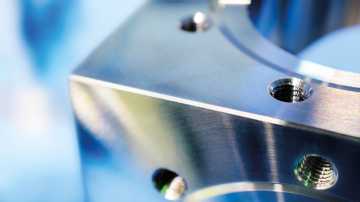We use first and third-party cookies for analytical and statistical purposes and to show you personalised advertisements based on a profile compiled from your browsing habits (e.g. pages visited). For more information, click on our Cookie Policy. You can accept all cookies by pressing 'Accept', you can reject all cookies by pressing 'Reject', or you can customize your choice by pressing 'Manage'.
Customer service with biometrics.

What is the impact of reducing customer verification by more than 30 seconds per call?
30 seconds seems like a short time, right? We probably wouldn't be prepared to pay good money for sleeping an extra 30 seconds or spending another 30 seconds on the sofa. But if they told us we could multiply those “negligible” 30 seconds by 500,000, turning them into 15 million seconds (4,000 hours), how much would we be willing to pay all that time “gained”?
Companies that use call centres spend an average of 30 seconds authenticating each customer. Another important average in this equation is the 500,000 calls that some of the main contact centres in Spain receive every month. These figures lead to a real saving of around 4,000 hours per month (that's 50,000 hours per year!) in telephone conversations thanks to the implementation of voice biometrics in customer identity verification.

That's a guaranteed ROI
Enhancing the security of remote authentication processes invariably has a negative impact on the user experience. Two-factor SMS authentication and CAPTCHA systems are clear examples of this. So enabling a company to verify the identity of its customers simply from their voice – naturally, in just three seconds and in any language – undoubtedly has direct and immediate cost savings for any contact centre. Oh, and it improves the user experience as well!
Another factor that is improved is the first contact resolution rate (FCR). The average error rate in knowledge-based authentication is around 10-15%, which increases the cost of each call by €10-€12. If we think about the 500,000 average monthly calls received at contact centres, the cost would be between €7 million and €11 million per year. Yes, you read it right. The average contact centre company is currently incurring a cost of between €7 million and €11 million due to authentication errors. However, with a voice biometrics solution like the one offered by Veridas, with an accuracy rate of over 99.5%, these figures would be far, far lower.
Voice biometrics is a key factor in average handle time (AHT) at any call centre because it reduces the time spent on customer authentication by more than 90% (verification currently takes 30-45 seconds and delivers questionable security because it is based on personal questions). Thanks to the biometric technology developed by the Spanish company Veridas, the time dedicated exclusively to authentication can be completely eliminated. Its text-independent solution verifies the identity of a user while they are speaking in a natural way with the agent, without having to utter long sentences pre-defined by the company. And it all it takes is three seconds.
Lastly, it's also worth highlighting the significant improvements in customer experience, measured through the Net Promoter Score (NPS). For end users, one of the main benefits of voice biometrics is being able to access platforms without entering a password because they are identified by their unique, non-transferable voice. . . The use of biometrics allows us to make the leap from presumption to certainty when verifying the identity of people. Biometrics is the ultimate natural check – it verifies something that “you are”, your physical attributes (in this case, your voice) – rather than something that “you have”, such as with SMS two-factor authentication, or some that “you know”, like your passwords.
Certify technology and comply with regulations
The use of voice biometrics is a key element for ensuring that digital transformation is carried out securely and reliably, providing certainty in the identification of the people with whom we interact in the digital and remote world. Reliability, accuracy and the protection of user data are the hallmarks of the technology developed by Veridas. As well as complying with regulations such as the GDPR, the company has its biometric software evaluated by independent organisations like the NIST (National Institute of Standards and Technology) in the United States, is compliant with iBeta Level 1 PAD ISO 30107, and was ranked second in the 2020 Short-duration Speaker Verification (SdSV) Challenge that evaluates different biometric engines.
More and more companies are integrating the Veridas voice biometrics solution into their authentication processes, both in call centre environments as well as in mobile applications, chatbots and third-party communication platforms like Telegram and WhatsApp. The truth is that the appetite for this technology cuts across all sectors, from telecommunications and finance to alarm systems and energy.
As Bernhard Hochsätter, executive product manager at Deutsche Telekom, said at the joint webinar held last March, the reason that helped them choose Veridas as their sole provider of voice biometrics was the combination of cutting-edge technology and customer experience: “No other solution on the market offered the same quality of user experience, delivering fast registration and verification while guaranteeing optimal accuracy with minimal error rates”.

Article written by:
- Veridas: Customer service with biometrics

